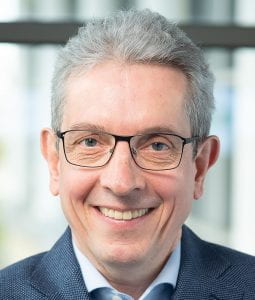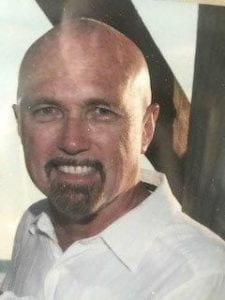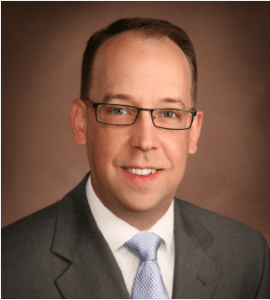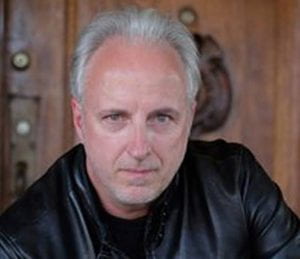Keynote Speakers
Neville Hogan
Sun Jae Professor of Mechanical Engineering, MIT USA

Title: A Quantitative Scientific Theory for Technology-Aided Neuro-Recovery
Abstract: The emergence of therapeutic and assistive robots promises new ways to aid and measure recovery after neurological injury. A quantitative, scientific theory of recovery is needed to fully realize that promise. That theory should be based on unimpaired motor behavior, at least its main features. Despite slower actuators (muscles), communication (neural transmission) and computation (neural processing) than contemporary robots, humans exhibit remarkably superior dexterity and agility. They also exhibit surprising limitations: for example, moving slowly and smoothly is hard for humans. These observations support a theory that human motor control is based on dynamic ‘building blocks’, including at least three classes: submovements, oscillations and mechanical impedances. Stereotyped submovements are evident in the earliest actions of persons recovering after stroke. Re-organization of these submovements quantifies the progress of recovery. Conversely, learning based on rhythmic performance transfers poorly to discrete actions. This may partly account for the surprising difficulty of technology-assisted locomotor rehabilitation. Abnormal tone, common after neural injury, results in abnormal muscle stiffness; that, in turn, may account for abnormal synergies. We recently showed that humans can identify limb stiffness from purely visual (non-contact) observations. Remarkably, our best subject was a highly-skilled physical therapist. This theory of recovery—re-assembly of dynamic ‘building blocks’ of unimpaired behavior—suggests new therapeutic technologies. Actuators, central to robotics, may be re-imagined as means to provide energy-efficient stiffness modulation and/or programmed into 3D-printed fabrics. These technologies enable ‘smart braces’ to provide permissive assistance, supporting patient actions as needed but without opposing expression of natural actions.
Biography: Neville Hogan is Professor of Mechanical Engineering, Professor of Brain and Cognitive Sciences and Director of the Newman Laboratory for Biomechanics and Human Rehabilitation at the Massachusetts Institute of Technology. He is a co-founder of Interactive Motion Technologies, Inc., and a board member of Advanced Mechanical Technologies, Inc. Born in Dublin, Ireland, he earned a Dip. Eng. (with distinction) from Dublin College of Technology and M.S., M.E. and Ph.D. degrees from MIT. Following industrial experience in engineering design, he joined MIT’s School of Engineering faculty in 1979 and has served as Head and Associate Head of the Mechanical Engineering department’s System Dynamics and Control division. Awards include an Honorary Doctorate from the Delft University of Technology; the Silver Medal of the Royal Academy of Medicine in Ireland; and an Honorary Doctorate from the Dublin Institute of Technology. Professor Hogan’s research is broad and multi-disciplinary, extending from biology to engineering—it has made significant contributions to motor neuroscience, rehabilitation engineering and robotics—but its focus converges on an emerging class of machines designed to cooperate physically with humans. Recent work pioneered the creation of robots sufficiently gentle to provide physiotherapy to frail and elderly patients recovering from neurological injury such as stroke, a novel therapy that has already proven its clinical significance.
Wolfram Burgard
VP for Automated Driving Technology at the Toyota Research Institute in Los Altos, USA
Title: Probabilistic and Machine Learning Approaches for Autonomous Robots and Automated Driving
Abstract: Autonomous robots and and self-driving cars are currently regarded as key technologies for changing our everyday life. They are envisiond to make production and logistic processes more effective and to increase the efficiency and safety of daily traffic. In this presentation I will describe the probabilistic foundations of building such autonomous systems. In addition, I will present how modern techniques from machine learning can be used to achieve advanced perception capabilities for such systems. I will focus on two key problems in this context. First, I will describe how to deal with the high dimensionality of the underlying state estimation processes. Second, I will present how to perform learning tasks in an unsupervised fashion to resolve the burden of manually labeling huge data sets. I will present several practical applications in the context of autonomous robots and cars that drive in an automated fashion.
Biography: Wolfram Burgard is VP for Automated Driving Technology at the Toyota Research Institute in Los Altos, USA. He is on leave from a Professorship for Autonomous Intelligent Systems at the University of Freiburg, Germany. His interests lie in AI and Robotics. He has made substantial contributions to several relevant problems including state estimation, navigation, localization, SLAM and mobile manipulation, state where he heads the Laboratory for Autonomous Intelligent Systems. His areas of interest lie in artificial intelligence and mobile manipulation. For his work, Wolfram Burgard received the Gottfried Wilhelm Leibniz Prize from the Deutsche Forschungsgemeinschaft, the most prestigious German research award, and an Advanced Grant from the European Research Council. He is fellow of the AAAI, the EurAI as well as the IEEE. He currently also serves as President of the IEEE Robotics and Automation Society.
Lisa Bender
Education in Emergencies Lead at UNICEF NYHQ, New York City, USA
Title: Do Good Together: The United Nations and Partnerships for Humanity
Abstract: The United Nations has been advancing an Agenda for Humanity to alleviate suffering, reduce risk and lessen vulnerability on a global scale. In the Agenda, humanity—people’s safety, dignity and the right to thrive— is placed at the heart of global decision-making. To achieve this, we must all commit to leave no one behind and work together differently to end need. One transformative strategy to advance the Agenda is education for all, especially in times of crisis. It is essential to ensure children and young people have the knowledge and skills they need to both survive and thrive. UNICEF recognizes that there is a vicious circle between education, inequality and violent conflict. Inequality is associated with an increased likelihood of violent conflict and violent conflict is in turn associated with loss of schooling and with increased education inequality. Innovative technologies present opportunities to dramatically change both teaching and learning in humanitarian crises. However, they can also put children at risk and worsen inequality. We must work together so that advancements are broadly shared, actively advancing equality. This demands a pro-poor focus with initiatives that prioritize working for and with those most likely to be left behind. We must recommit to Do No Harm and then move beyond good intentions to actually Do Good.
Biography: Lisa Bender is a global expert on education in crisis-affected contexts and is currently with UNICEF NYC headquarters where she provides technical and policy advice with a focus on complex emergencies. Ms. Bender serves in a number of global leadership and advisory capacities. She co-chairs the Global Alliance for Disaster Risk Reduction & Resilience in the Education Sector. And, as a member of its Steering Committee, Lisa works with the Humanitarian Education Accelerator to scale-up educational innovations for forcibly displaced children. Lisa’s current focus includes expanding global efforts to better protect education from attack and examining how new technologies can advance educational equity, especially for girls. Prior to UNICEF, Lisa worked with other UN agencies and international NGOs in countries such as Yemen, the Democratic Republic of the Congo, and Bangladesh. She has contributed to significant UN publications and and authored the Education Chapter of the European Union, UN Development Group, and World Bank guide for conducting Post Disaster Needs Assessments. She also recently led the technical and operational design of a new global financing platform that aims to transform the delivery of education for children and youth affected by emergencies. Lisa is proud to have served in the Peace Corps and began her professional career in social work and as a teacher. She holds a Master’s degree from Vanderbilt University’s Peabody College of Education.
Bradley Rein
Acting Deputy Director, National Institute of Food and Agriculture, US Dept. of Agriculture, USA
Tittle: NIFA’s role in supporting transformative change in agriculture through robotics and smart technologies.
Abstract: As the lead USDA science agency for extramural funding of science and technology the National Institute of Food and Agriculture supports new uses of robotics and precision agriculture. NIFA has launched a data science initiative, Food and Agriculture Cyberinformatics and Tools, to accelerate and expand on a diverse portfolio of AI-related programs that represent a multitude of uses in agricultural production, sensor development, bioinformatics, ecosystem management, rural community support, and workforce development through education and training at all levels. This work includes robotic solutions that utilize AI technologies to assist in pollination, weeding, pesticide applications, and fruit harvesting; AI algorithms that assist in identifying plant, animal and tree species that contribute to pest control and ecosystem management; and adaptive groundwater and watershed models to maintain resilience of agricultural systems. NIFA’s investments contribute to a wide breadth of AI-relevant research including big data, machine learning, autonomous systems, computer vision and intelligent decision support systems, as well as the socioeconomic and workforce considerations with rapidly increasing role of AI in U.S. agriculture. I will present a brief status of the current technologies in use in agriculture, our research programs and priorities and example funded projects.
Biography: Brad Rein is a National Science Liaison for the National Institute of Food and Agriculture (NIFA). NIFA National Science Liaisons are new positions that support the agency’s research education and extension portfolio; provide broad scientific and technical expertise; and coordinate stakeholder and interagency interactions. In his previous position at NIFA Brad was Division Director of Agricultural Systems with responsibility for agricultural technologies such as precision agriculture, robotics, and cyber-physical systems; engineering, economics and data sciences. Brad grew up on an integrated crop and livestock farm in western Nebraska and earned his bachelors and master’s degrees in agricultural engineering with an emphasis on renewable energy from the University of Nebraska. He has served as a United Nations recruited technical advisor to the Peoples Republic of China on biofuels research and an Embassy Science Fellow to Jamaica on development of their National Biofuels Policy. Prior to joining USDA in 1989 as a National Program Leader Brad held a faculty position as the Extension Specialist in Engineering at the University of Arizona. Brad is a registered professional engineer, a 40-year member of the American Society of Agricultural and Biological Engineering and a past President of the International Society of Agricultural Safety and Health.
Invited Speakers
Mark Osler
Senior Advisor for Coastal Inundation and Resilience Science and Services, NOAA, USA
Title: From Space to the Depths of the Ocean: How NOAA Uses Robotics, Automation, and AI to Deliver Science that Serves the Nation
Abstract: NOAA is an agency that enriches life through science. Our reach goes from the surface of the sun to the depths of the ocean floor as we work to keep the public informed of the changing environment around them. From daily weather forecasts, severe storm warnings, and climate monitoring to fisheries management, coastal resilience and supporting marine commerce, NOAA’s products and services support economic vitality. Data, modeling, and applied technology are the lifeblood of NOAA’s ability to innovate and deliver on this vital mission. NOAA’s dedicated scientists and engineers use cutting-edge research and high-tech instrumentation to drive our ocean-based Blue Economy and enable NOAA to advance U.S. leadership in weather forecasting. This talk will provide an overview of NOAA’s mission and the use of technology in delivering on this mission for the country. Specifics covered will include the use of robotics for ocean exploration, AI for empowering citizen science in environmental monitoring, and how machine learning is enhancing our skill in numerical weather prediction.
Biography: Mark Osler is the Senior Advisor for Coastal Inundation and Resilience for the U.S. National Oceanographic and Atmospheric Administration (NOAA). His leadership advances coastal inundation science and the ability of decision makers to prepare for and respond to changes affecting coastal communities. He serves as senior advisor to NOAA leadership on defining the science and policy priorities related to understanding and reducing impacts of coastal risk to the public and our nation’s economy. Prior to joining NOAA, Mark worked for 17 years in the private sector. He holds a bachelor’s degree in civil engineering from Lehigh University and a master’s degree in coastal engineering from the University of Delaware’s Center for Applied Coastal Research.
Kerry Fleming
Airspace Security Specialist, System Operations Support Center, Federal Aviation Authority, USA
Title: FAA Air Traffic Organization UAS Disaster Response
Biography: Kerry Fleming has been employed by the Federal Aviation Administration (FAA) for over thirty years. The first twenty of which as an air traffic controller in Bridgeport, CT, and since then as an airspace security specialist at FAA Headquarters in Washington, DC. Mr. Fleming works as an airspace security specialist in the System Operations Support Center (SOSC) under the direction of the Air Traffic Security branch of the FAA. The group is responsible for applying all airspace security regulations with the protection of all Presidential and Vice Presidential aircraft throughout the United States as their number one job responsibility. The group’s other main duties include; the creation and oversight of all security related Temporary Flight Restrictions (TFRs), approving flight operation requests for restricted and prohibited airspace, and assisting local law enforcements with their manned and unmanned aircraft requests. Additionally, this group authorizes airspace access for all Unmanned Aircraft (UAS) into the National Airspace System (NAS) for emergency situations or whenever a natural or man-made disaster occurs. Mr. Fleming and his associates processed hundreds of emergency certificates of authorization (COAs) and Special Governmental Interest (SGI) airspace waivers to support first responders during the Hurricanes of the last two years. Mr. Fleming is a long term member of the Airborne Law Enforcement Association.





